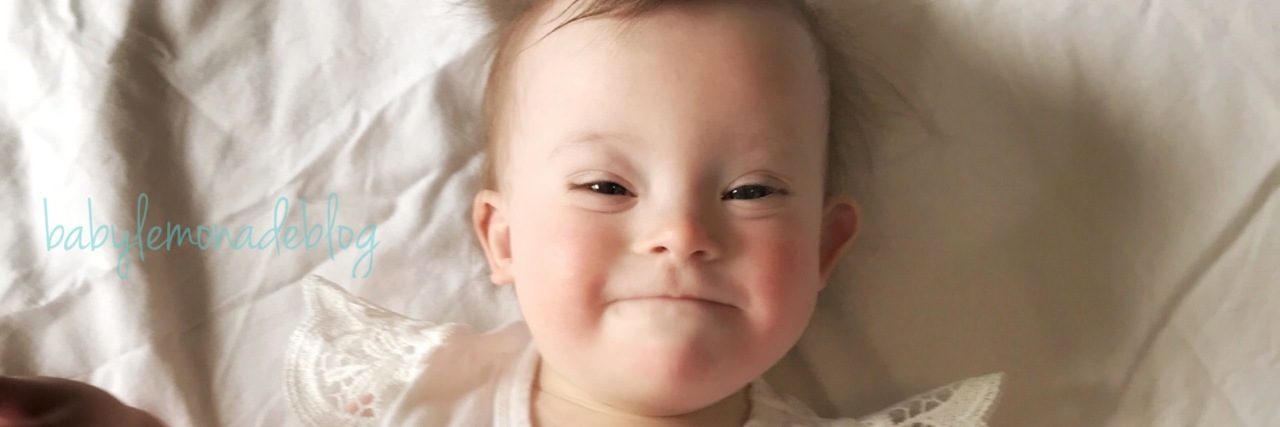My daughter went under anesthesia for the first time last fall. We had concerns for her hearing because we weren’t seeing much progress with her speech. We had her hearing checked and sure enough, her tympanograms were coming up flat. The flat results indicated her eardrums weren’t moving and there had to be a reason.
We suspected fluid behind her eardrums, so we were directed to get tubes placed. But my problem was a doctor seeing my child as a diagnosis before seeing her as a patient.
In short, this is how the news was presented to me:
Kara’s results could mean there is fluid in her ears — the solution is to place tubes to drain the fluid. This is how the procedure will go and here are the risks and “yadda yadda,” and did you know that most kids with Down syndrome get tubes in their ears at some point? Because she has Down syndrome, Kara’s ears will probably end up needing the smaller size of tube which usually falls out in six months versus the normal sized one that displaces after one to one and a half years. You should probably expect many more visits.
But it could also be that her ear canals are so short and narrow that the test isn’t getting a good reading because people with Down syndrome have shorter everything. In this case, we could wait it out [again] and see if it resolves itself. Meanwhile, we might see more delays with speech if it turns out that she does indeed have fluid.
Because she has Down syndrome, Kara’s ears are just too small to tell for sure…
Now…what would you like to do?
I literally stared at her because isn’t that why I was here in the first place? For someone to tell me what we should do? For some advice on how to help my daughter?
I felt pushed in the direction of tubes because statistically many kids with Down syndrome have hearing issues. I felt pushed into thinking that even if she didn’t have fluid, she probably would at some point, so might as well put them in now. I didn’t like feeling pushed, so I said I would need to consult with my husband and her therapists.
I understood it was a minor procedure, but all the what ifs kept floating through my head…
What if she doesn’t have fluid and we cut into her ear drum for no reason?
What if she’s part of the small percentage of patients who experience scarring on her ear drum?
What if she has a reaction to the anesthesia?
What if we choose to wait and it makes it that much harder for her to catch up on her speech?
I am learning more and more how to be an advocate for her.
What I did next made all the difference: I followed my gut and I got a second opinion.
I was afraid to do this. I’ve never been one to go against a doctor’s opinion, but I’ve never been in this position before.
So I took her to see someone else. After explaining my concerns to the second doctor (and felt like I was heard), he took a peek inside Kara’s ears and said:
“I cannot be 100 percent sure because her canals are narrow, but I am confident that she has fluid behind her eardrums and this is why…”
He went on to explain the anatomy of the ear, what he was seeing, and why that points towards fluid buildup. I learned so much!
Down syndrome was mentioned… maybe once?
I could have hugged him!
Instead, I threw my hands up and said, “That’s all I needed! Let’s talk surgery dates!”
Kara had the tubes placed, the regular sized tubes I might add, and we had a wonderful experience. The tubes made an immediate and noticeable difference so I know there had to be fluid that was hindering her hearing before. I’m glad she had the surgery because it really helped.
What didn’t help was the reminder of how the world sees my daughter. That she was generalized and talked about like she was a statistic and nothing more. This happens all the time to families in the Down syndrome community (with any disability, actually).
It’s more than OK that our first doctor knew all the stats on people with Down syndrome. I’m glad she was familiar. However, what I hope for when I take my daughter anywhere, is an experience more like what we had with our second doctor.
This is a reason why I prefer people first language. What this means is that you talk about the person first.
Example: Kara has Down syndrome. She is a child who has Down syndrome. She is not a “Down syndrome child” and she was never a “Down’s baby.”
She isn’t a statistic. She is her own person. from my perspective, when you start to speak in people first language, you start to think in people first language.
I will continue to encourage this change alongside our peers. The voices in the Down syndrome community are loud, so I have high hopes!
Kara will grow into a wonderful adult who happens to have Down syndrome. That is how I want the world to see her: as Kara.
Follow this journey at www.babylemonadeblog.com.

